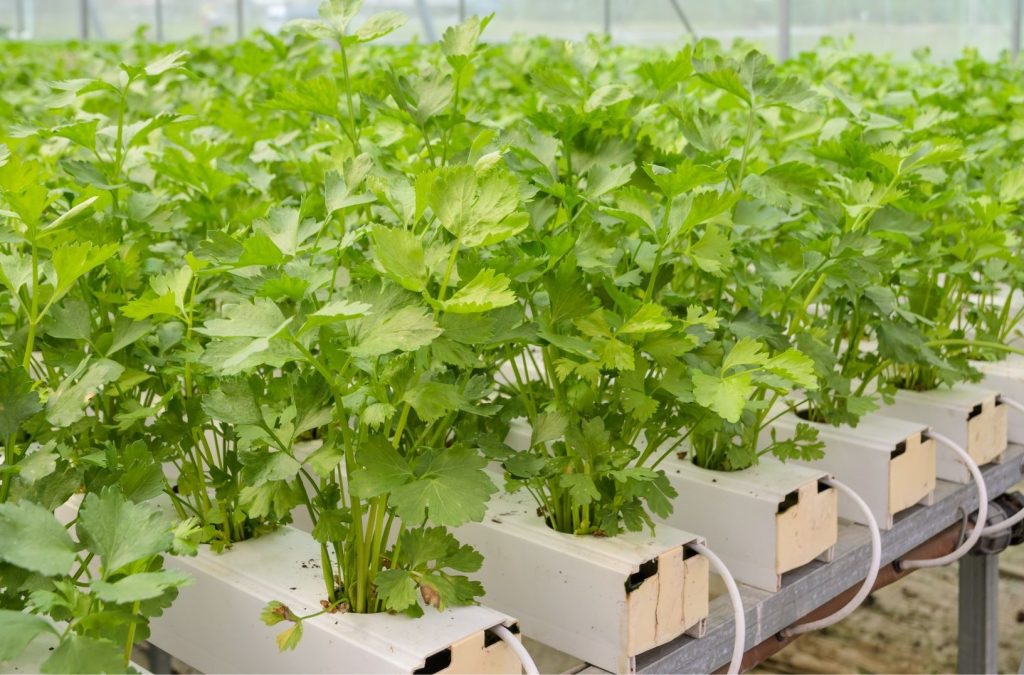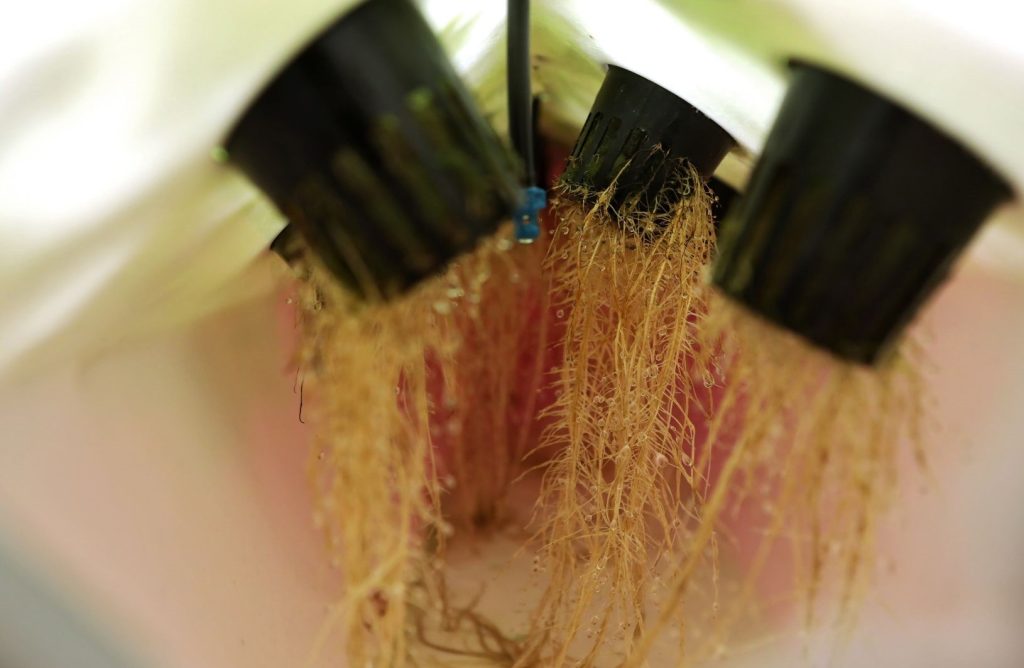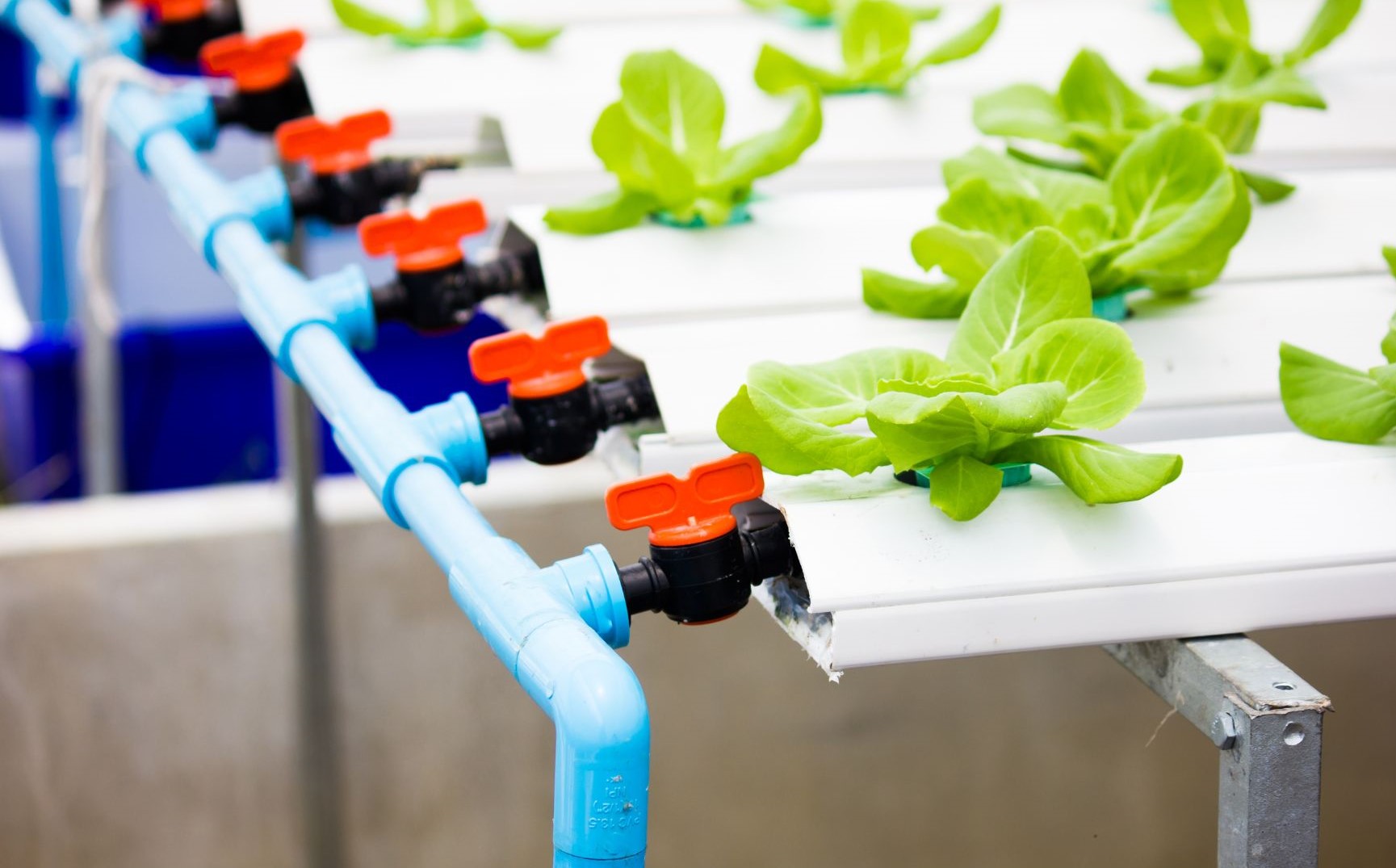Different types of hydroponics systems and how they work
Hydroponics is a method of growing plants without soil, using a nutrient-rich solution that is used is delivered directly to plants’ roots. This method of growing plants has several advantages over traditional soil-based methods. For example, hydroponic systems use less water than soil-based systems and can produce higher yields in less space. To learn more about the steps a farmer follows in a hydroponic system please read the article of the author: A Beginner’s Guide to Hydroponics Farming: From Seed to Harvest.
There are several types of hydroponic systems. Here are some of them:
- Wick system: The simplest type of hydroponic system where a wick draws water and nutrients from a reservoir to the plant roots.
- Deep water culture (DWC): The plant roots are submerged in a nutrient solution that is aerated by an air pump.
- Nutrient film technique (NFT): A thin film of nutrient solution flows through a channel or tube where the plant roots are exposed to contact with the liquid.
- Ebb and flow (or flood and drain): The roots of the plants growing on a trail are periodically submerged in the nutrient-rich solution, which is left to empty back into the reservoir for future use.
- Drip system: A pump delivers a nutrient solution to each plant through a drip emitter.
- Aeroponics: The plant roots are sprayed with a fine mist of nutrient-rich solution.
Working principle of wick system:
In a wick system, the plant is cultivated in a container with a growing medium such as perlite or coconut coir. A wick made of cotton or nylon is placed in the growing medium and extends down into the nutrient solution. The wick draws the nutrient solution up from the reservoir to the plant roots. The plant roots absorb the necessary nutrients, and excess water drains back into the reservoir.
How do I set up a wick system for my plants?
- Choose a container: You can use any large container to hold your plant and growing medium. Make sure the container has drainage holes at the bottom.
- Add growing medium: Fill the container with your chosen medium, such as perlite or coconut coir.
- Create a wick: Cut a piece of cotton or nylon rope that is long enough to reach from the bottom of the container to the nutrient solution in the reservoir.
- Insert the wick: Insert one end of the wick into the growing medium and let it rest on the bottom of the container. Place the wick’s other end into the reservoir’s nutrient solution.
- Add plants: Plant your seedlings in the growing medium and water them thoroughly.
- Add nutrient solution: Fill the reservoir with nutrient solution and place it below the container.
- Monitor and maintain: Regularly check the nutrient solution level and add more as needed. Also, check that the wick has enough nutrient solution to keep your plants healthy.
Working principle of Deep water culture:
In deep water culture (DWC), the plant roots are submerged in a nutrient solution that is enriched with oxygen using an air pump. The plant roots are not in contact with any growing medium. The air pump provides oxygen to the roots and helps to circulate the nutrient solution.

How do I set up a deep water culture system?
- Choose a container: You can use any container that is large enough to hold your plant and nutrient solution. Make sure the container has a lid.
- Add nutrient solution: Fill the container with nutrient solution. The level of the nutrient solution should be high enough to cover the roots of your plants.
- Install an air pump: Install an air pump in the container and connect it to an airstone. The air stone will help to aerate the nutrient solution.
- Add plants: Plant your seedlings in net pots or other containers that can be suspended in the nutrient solution.
- Submerge the plants: Using a floating platform or other support, suspend the plants in the nutrient solution.
- Monitor and maintain: Regularly check the nutrient solution level and add more as needed. Also, check that the air pump works correctly and provides enough oxygen to the roots.

Working principle of Nutrient film technique:
In the Nutrient Film Technique (NFT), a thin film of nutrient solution flows through a channel or tube where the plant’s bare roots are allowed to grow and come in contact with it. The nutrient solution comes from the reservoir to the top of the channel and flows down to the bottom by gravity. The roots absorb the necessary nutrients, and excess water drains back into the reservoir.

How do I set up a nutrient film technique system?
- Choose a channel or tube: You can use any channel or tube that is large enough to hold your plants and nutrient solution. The channel should be sloped slightly to allow the nutrient solution to flow down by gravity.
- Install a pump: Install a pump in the reservoir and connect it to the channel or tube. The pump will help to circulate the nutrient solution in the NFT system and flood the growing tray with the nutrient solution in the case of the ebb and flow system.
- Add plants: Plant your seedlings in net pots or other containers.
- Connect the channel or tube: Connect them to the pump and make sure that the nutrient solution flows down by gravity.
- Monitor and maintain: Check the nutrient solution level regularly and add more as needed. Also, check that the pump works correctly and provides enough nutrient solution to your plants.
Working principle of ebb and flow (or flood and drain )
In ebb and flow (or flood and drain), the plant roots are periodically flooded with nutrient solution to supply the plants with water and nutrients. The solution is slowly drained back into the reservoir, and this cycle is repeated several times a day.

How do I set up an ebb and flow system?
- Choose a growing tray with similar characteristics mentioned above.
- Install a pump: Install a pump in the reservoir and connect it to the growing tray. The pump will help to flood the growing tray with nutrient solution.
- Add plants: Plant your seedlings in net pots or other containers that can be placed in the growing tray.
- Connect the growing tray: Connect the growing tray to the pump and make sure that the nutrient solution flows down by gravity.
- Set up a timer: Set up a timer to turn the pump on and off several times a day. This will flood the growing tray with nutrient solution and then drain it back into the reservoir.
- Monitor and maintain: Regularly check the nutrient solution level and add more as needed. Also, check that the pump works properly and provides enough nutrient solution to your plants.
Working Principle of Drip system:
In the drip system, the nutrient solution is dripped onto the base of each plant through a small tube or emitter. The excess solution drains back into the reservoir.
How do I set up a drip system?
- Choose a growing tray: You can use any large tray with drainage holes at the bottom.
- Install a pump: Install a pump in the reservoir and connect it to the top of the plants. The pump will help to circulate the nutrient solution.
- Add plants: Plant your seedlings in net pots or other containers that can be placed in the growing tray.
- Connect the drip system: Connect the drip system to the pump and make sure that each plant has its own tube or emitter.
- Set up a timer: Set up a timer to turn the pump on and off several times a day. This will drip nutrient solution onto the base of each plant.
- Monitor and maintain: Regularly check the nutrient solution level and add more as needed.
Working principle of Aeroponics system:
In an aeroponics system, plant roots are suspended in the air and sprayed with nutrient solution. The nutrient solution is sprayed onto the roots in a fine mist using high-pressure misters. The excess nutrient solution is collected and recycled back into the reservoir.

How do I set up an aeroponics system?
- Choose a growing chamber: The chamber size will need to fit the number of plants needed to be grown and should be enclosed to maintain high humidity.
- Install a pump: Install a pump in the reservoir and connect it to the high-pressure misters. The pump will help to circulate the nutrient solution.
- Add plants: Plant your seedlings in net pots or other containers in the growing chamber.
- Connect the high-pressure misters: Connect the high-pressure misters to the pump and ensure each plant is sprayed with nutrient solution.
- Set up a timer: Set up a timer to turn the pump on and off several times a day. This will spray nutrient solution onto the roots of each plant.
- Monitor and maintain: Regularly check the nutrient solution level and add more as needed. Also, check that the pump is working correctly and providing enough nutrient solution to your plants
References
- https://extension.umn.edu/how/small-scale-hydroponics
- https://www.nal.usda.gov/farms-and-agricultural-production-systems/hydroponics
- https://extension.psu.edu/hydroponics-systems-and-principles-of-plant-nutrition-essential-nutrients-function-deficiency-and-excess
- https://www.sciencedirect.com/science/article/pii/B9780128166918000200
- https://www.sciencedirect.com/topics/agricultural-and-biological-sciences/nutrient-film-technique
- https://iopscience.iop.org/article/10.1088/1757-899X/1108/1/012032/meta











































































